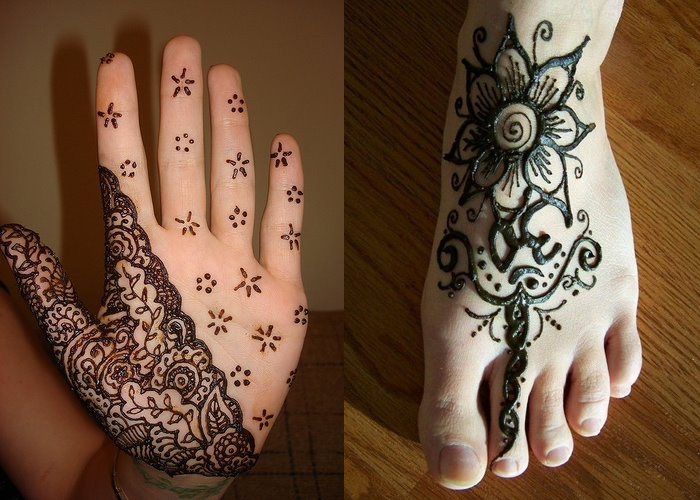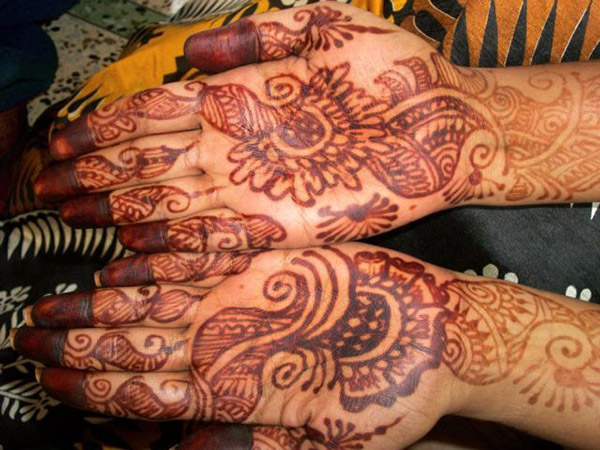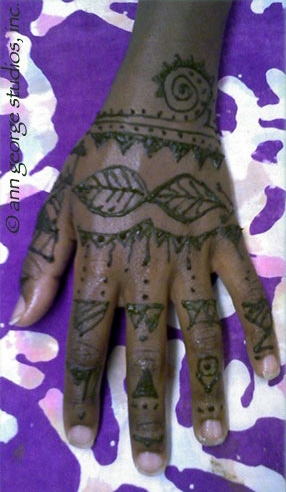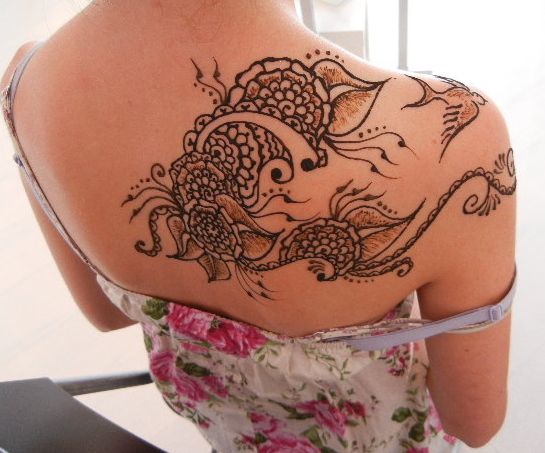Author – Debjani Goswami

The world of fashion is in a constant state of evolution. The steady influx of new trends serves as a suitable replacement for older ones; but, some styles never go out of fashion and are termed as ‘classics’. The art of mehendi is one such tradition that has managed to establish itself firmly in the annals of fashion as a classic instead of a mere fad. The trend has garnered a huge fan following not just in the Asian countries but even in the West. Similarly, temporary tattooing has also gained tremendous popularity around the globe, among both men and women. The appeal of tattoos stems from their contemporary designs and characteristic of a free attitude.
History of Mehendi

Mehendi or Mehndi (Henna tattoo) is a traditional custom of temporary decoration for the skin, an art form that has evolved since ancient times. Commonly known in the West as ‘henna tattoo’, the word ‘henna’ refers to the dye extracted from the henna plant and the art of temporary tattooing based on those dyes. The origins of henna can be traced back to the Middle Eastern Asia, mostly Ancient Egypt. In Egypt, tattooing the mummies was common but mainly for the purpose of decoration. A group of historians believe that mehendi was brought to India by the Mughal dynasty, but others believe that the birthplace of this style was India itself. The traditional motifs may have been derived from the regions of Gujarat, Punjab and Rajasthan.
Different Compositions of Mehendi

Mehendi and tattoo styles tend to differ from one region to another depending on the usage, but the most popular designs originate from African, Pakistani, Arabic and Indian, while tattoos are mostly African or American. The subtle nuances of each technique impart a unique identity to them. The patterns of African mehendi with predominantly geometric points and shapes are sparsely used in contemporary design. Painting of Pakistani mehendi happens to be the most detailed art form. The popular Arabic style of mehendi painting boasts of a simple and uncomplicated design with dark colours. The mehendi motifs in India are large and are applied on the centre of the palm, which spreads across the rest of the hand.
Shift from Tradition to Fashion Statement
Mehendi is an integral part of Muslim and Hindu wedding celebrations in South Asia and the Middle East. The tradition holds cultural and religious significance as well. Indian brides must adorn their hands and feet with henna tattoos and the intensity of the colour is said to indicate the strength of the bond between the mother-in-law and the bride. For a married woman, mehendi is considered to be one of the most sacred ornaments. Even festivals such as Diwali warrant the application of mehendi.
Henna tattoos became a part of European pop cultures in the late 1990s. In recent times, these henna tattoos serve as a hip alternative to conventional tattoos, which in turn has gained popularity in the east these days. Various celebrities and actors in Hollywood such as Gwen Stefani and Demi Moore were among the first wave of celebs to show off this innovative and painless body painting art. They paved the way for the mehendi trend among stars such as Madonna, Naomi Campbell, Drew Barrymore, Laura Dem, and Daryl Hannah. International fashion magazines like Harper’s Bazaar, Cosmopolitan and Vanity Fair have helped spread the popularity of mehendi to a worldwide audience.
Temporary tattoos and Mehendi

Temporary tattoos have become the current rage among the youth since they help make a style statement without causing a permanent damage to the skin. However, the art of temporary tattoos is not a modern development; tattoos were commonly used as cultural symbols among various tribal populations along with the caste Hindus in India.
The practice of temporary tattooing exists in different civilizations. It was not just used for distinction or ornamentation but in order to ward off evil spirits. They consist of complex patterns resembling woven reeds or some other natural form. Temporary tattoos adorned the bodies of both the men and women. In India, the monkey god Hanuman was a common symbol for strength and adorned the legs and arms. The mythical monk is a popular creation, indigenous to Myanmar and Thailand. In Africa, since the people have dark skin, permanent tattoo marks would not be visible and so temporary tattoos are created using white powder.
Fact file –
http://tribune.com.pk
http://www.dailymail.co.uk/
http://spiritvisionhenna.com
http://en.wikipedia.org





